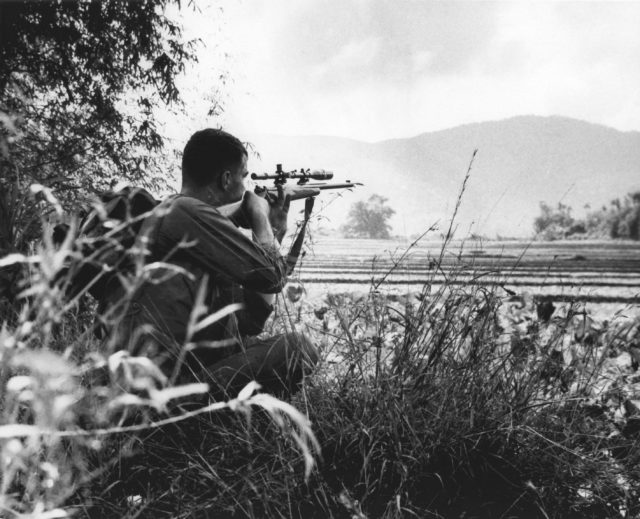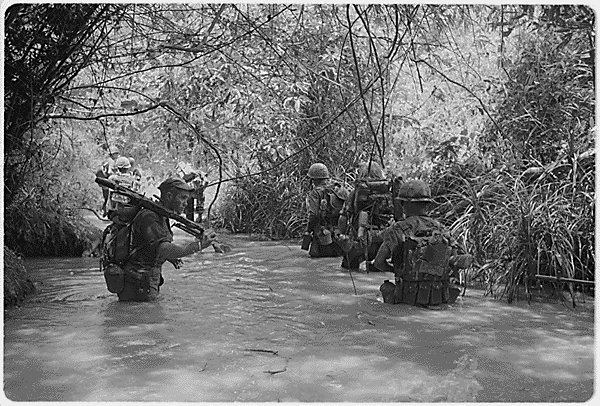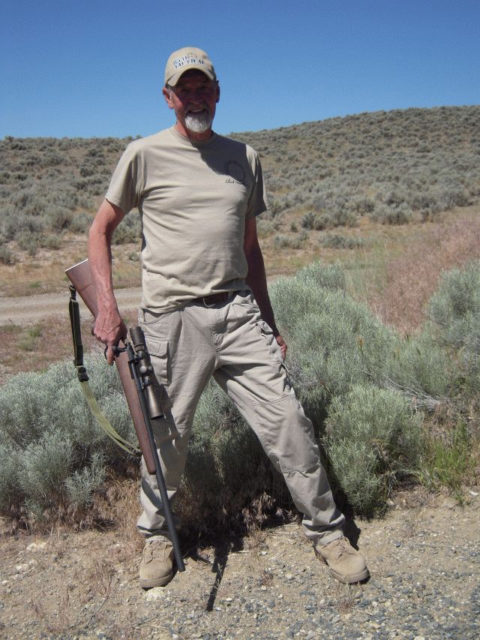Most service members who accomplish incredible feats during their time overseas are well known for their actions. They are often heavily praised by the public, or given awards for their actions. Others recount their experiences in autobiographies or become a subject of interest in a biography or movie. Chuck Mawhinney, on the other hand, wanted the opposite.
As a US Marine, he was sent to fight in the Vietnam War as a sniper and had a stellar career, yet decided to tell no one about it – not family, not friends, and not even his wife. That is until someone decided to tell his story for him. Once it was out in the open, he took the opportunity to not only confirm the tale, but to try and change the public image of snipers.
Early life
Mawhinney was born in 1949 in Lakeview, Oregon. As a child, he spent a lot of time hunting alongside his father. Mawhinney recalled, “My father was a Marine during World War II. I started shooting at a very young age, and he taught me to shoot like the Marines taught him, so there wasn’t any big transition from hunting in Oregon to becoming a sniper.”

He indeed decided to become a sniper, graduating from high school in 1967 and joining the Marine Corps shortly afterward. Though, unusually, he made a special agreement that he didn’t have to report to training until after deer hunting season was finished for the year. Mawhinney attended the Scout Sniper School at Camp Pendleton where he graduated in April 1968 before being sent to Vietnam.
Duties as a Marine sniper
While Mawhinney started his career in Vietnam as a rifleman with Lima Company 1st Battalion, 5th Marines, 1st Marine Division, he was soon transferred through a variety of different battalions before ending up with the Delta Company. It was during his time with them that he had what is often considered to be his most impressive moment as a sniper.

On Valentines Day 1969, he was stationed near Da Nang when he received word that a large group of North Vietnamese Army (NVA) soldiers were moving towards the base. He volunteer to go ahead with his spotter to cover the river they were trying to cross in the dead of night. Once in position, he started to shoot, managing to get off an impressive 16 shots in just 30 seconds. “Every one of them was headshots, dead center,” according to Mawhinney.
Record number of kills
His night in Da Nang was just one example of his prowess with a rifle, and his actions helped stop the NVA advance. Although Mawhinney doesn’t have the most kills of any US service member during the Vietnam War (this distinction goes to Adelbert Waldron), he does have the most sniper kills of any US Marine at 103 with an additional 216 probable kills. These statistics mean that he is the deadliest Marine sniper in history.

Perhaps even more impressive than his number of kills is the fact that of all the shots he made during his 16 months overseas, he only ever missed once. He shot this soldier from a distance of 300 yards, something he did frequently, yet he missed every shot he tried. Recalling how he felt, he said “I can’t help thinking about how many people that he may have killed later, how many of my friends, how many Marines…That still bothers me.”
Keeping a secret
Mawhinney spent a brief period of time as a marksmanship instructor in the US after being declared combat fatigued from Vietnam and sent home. While at Camp Pendleton, he suffered from nightmares, specifically about being trapped in a foxhole while under heavy fire. He left the Marines in 1970, which had a very positive effect on his mental health.
Back in his hometown of Lakeview, he began working for the US Forestry Service as a road maintenance crew member. He even got married, and all while his life in Vietnam remained a complete secret. Mawhinney didn’t become known for his abilities by choice, but rather because a fellow Marine decided to make his actions in Vietnam public knowledge.
In 1991, Joseph Ward published a book entitled Dear Mom: A Sniper’s Vietnam which detailed Ward’s service as well as accounts of Mawhinney’s time overseas. When stories of this unheard-of legendary sniper reached the news, Mawhinney quickly became a well-known figure. Part of the reason for his sudden fame was that Ward credited him with 101 kills, eight more than Carlos Hathcock who then held the record.
Life in the public eye
Initially, Mawhinney was upset that his past was now public, but he eventually began to do interviews with a variety of different outlets. Some of what is now known about Mawhinney comes from these interviews, while other information comes from the book Sniper: The Untold Story of the Marine Corps Greatest Marksman of All Time, which tells his full story.

of rifle he used in Vietnam. (Photo Credit: USMC Archives)
He also started to speak at conventions and events, including classes that trained future professional snipers. During the lectures with trainees, Mawhinney likes to impart some of his veteran advice. “I give them Chuck Mawhinney’s three rules of becoming a good sniper: Practice, practice and more practice.” However, he talks about his experience for more reasons than just helping others become good snipers.
More from us: Smith & Wesson Model 29: Dirty Harry’s Go-To Pistol
He took the opportunity that he was given when the public found out about his impressive service record to try and show people that snipers weren’t just bloodthirsty assassins. Mawhinney stated: “A good sniper saves more lives than he takes because he undercuts the enemy’s will or ability to fight.”
